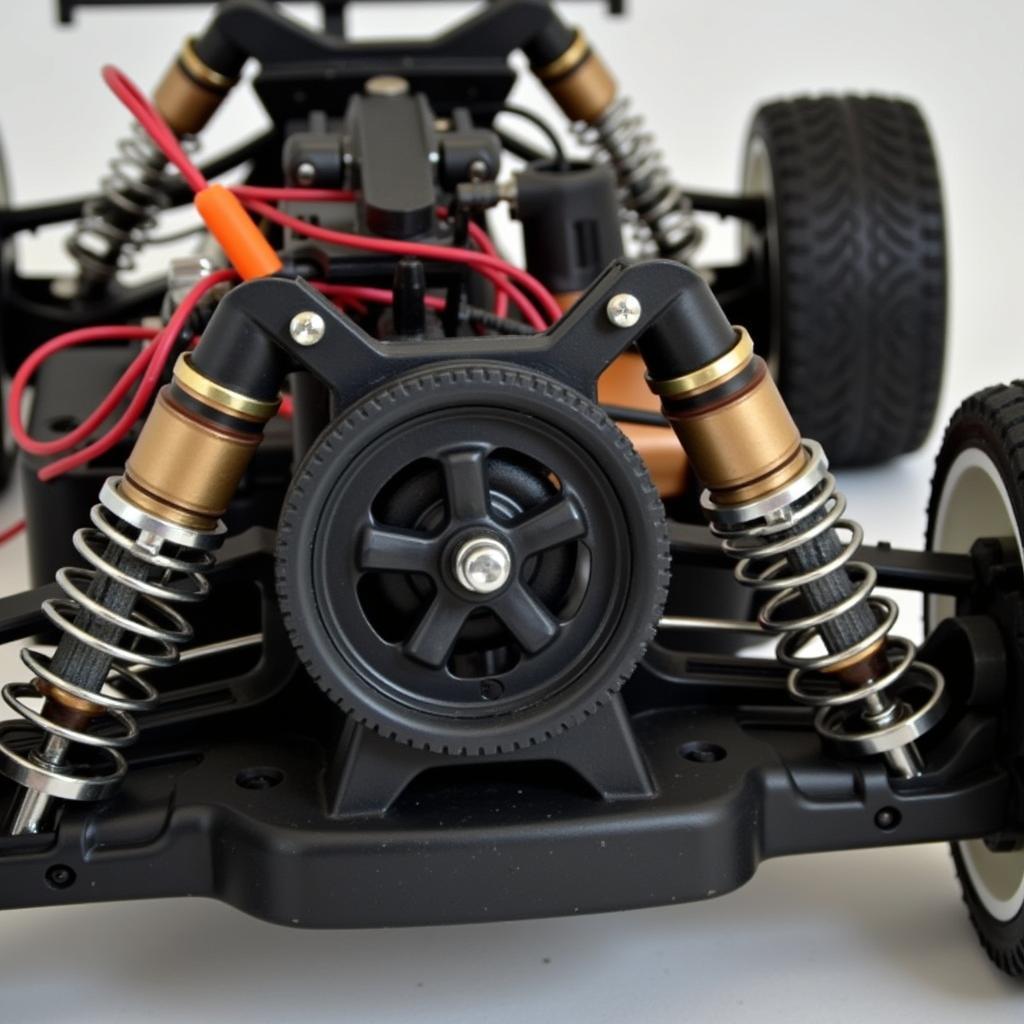Remote control (RC) cars provide hours of fun and excitement for kids and adults alike. But what happens when your prized RC car stops working? Before you throw in the towel, consider troubleshooting and repairing it yourself. This comprehensive guide will equip you with the knowledge and techniques to tackle common RC car issues and get your car back on track.
Common RC Car Problems and Solutions
Understanding the common problems associated with RC cars is the first step to effective repair. Here’s a breakdown of issues you might encounter and how to address them:
1. Car Won’t Run
Problem: Your RC car shows no signs of life when you press the throttle.
Possible Causes:
- Dead batteries: This is the most common culprit.
- Loose battery connections: Check both the car battery and the remote control batteries.
- Faulty wiring: Inspect the wires for any breaks or disconnections.
- Broken antenna wire: A damaged antenna wire can disrupt the signal between the remote and the car.
Solution:
- Replace or recharge the batteries: Start by replacing the batteries in both the car and the remote.
- Secure battery connections: Ensure all battery connections are tight and secure.
- Repair or replace faulty wiring: If you find any broken or disconnected wires, carefully solder or reconnect them.
- Replace the antenna wire: If the antenna wire is damaged, replace it with a new one.
2. Car Runs Slowly or Erratically
Problem: Your RC car lacks power or moves in unexpected directions.
Possible Causes:
- Low batteries: Even slightly depleted batteries can affect performance.
- Motor problems: A worn-out or damaged motor can cause sluggishness.
- Gear issues: Stripped gears or misaligned gears can hinder movement.
Solution:
- Fully charge the batteries: Ensure the batteries are fully charged for optimal performance.
- Inspect the motor: Check the motor for any visible damage or excessive wear. Consider replacing the motor if necessary.
- Examine the gears: Open the gear housing and inspect the gears for any stripping or misalignment. Replace or realign the gears as needed.
 RC car motor and gears
RC car motor and gears
3. Steering Problems
Problem: Your RC car doesn’t respond to steering inputs or steers erratically.
Possible Causes:
- Servo issues: A malfunctioning steering servo can cause steering problems.
- Damaged steering linkage: Bent or broken steering linkage components can affect control.
- Trim settings: Incorrect trim settings on the remote control can lead to steering bias.
Solution:
- Test the servo: Connect the servo to a receiver tester or a spare receiver to check if it’s working correctly. Replace the servo if it’s faulty.
- Inspect the steering linkage: Examine the steering linkage for any bends, breaks, or loose parts. Repair or replace damaged components.
- Adjust the trim settings: Use the trim knobs on the remote control to fine-tune the steering neutrality.
4. Remote Control Issues
Problem: The remote control doesn’t seem to be communicating with the car.
Possible Causes:
- Dead batteries: Always start by checking the batteries in the remote.
- Crystal mismatch: If you’re using a car and remote with separate crystals, ensure they match in frequency.
- Interference: Other electronic devices or radio signals can interfere with the remote control signal.
Solution:
- Replace the remote batteries: Install fresh batteries in the remote control.
- Verify crystal compatibility: If applicable, confirm that the crystals in the car and remote have the same frequency.
- Eliminate interference: Move away from potential sources of interference or switch to a different frequency band.
Tips for Maintaining Your RC Car
Regular maintenance can significantly extend the life of your RC car and prevent many common problems:
- Clean your RC car after each use: Remove dirt, debris, and moisture to prevent corrosion and damage.
- Inspect and lubricate moving parts: Regularly check for wear and tear on gears, bearings, and suspension components. Apply appropriate lubricants to keep things running smoothly.
- Store your RC car properly: Store your car in a cool, dry place to prevent damage from moisture, dust, and extreme temperatures.
- Charge batteries correctly: Follow the manufacturer’s instructions for charging and storing batteries. Avoid overcharging or completely draining the batteries.
When to Seek Professional Help
While many RC car repairs can be done at home, some situations might require professional assistance:
- Complex electrical issues: If you suspect a problem with the electronic speed control (ESC), receiver, or other complex electronic components, it’s best to seek professional help.
- Severe damage: If your RC car has sustained significant damage from a crash or impact, a professional repair shop can assess the damage and recommend the best course of action.
- Lack of experience: If you’re uncomfortable with soldering, disassembling complex components, or troubleshooting electrical issues, don’t hesitate to take your car to a qualified technician.
Conclusion
Repairing your own RC car can be a rewarding experience, allowing you to understand the mechanics and electronics of these miniature machines. By following the troubleshooting tips in this guide and performing regular maintenance, you can keep your RC car running smoothly for years to come.
Remember to consult your RC car’s manual for specific instructions and safety precautions. And if you encounter a problem you can’t solve on your own, don’t hesitate to reach out to a professional RC car repair shop for assistance.
Is there any shop to repair remote control car? How to repair remote control toy car? How to make remote control car repair running cars? These are all valid questions and we have the answers for you. For further assistance, feel free to contact our team of experts via WhatsApp: +1(641)206-8880, or Email: [email protected]. We’re available 24/7 to provide you with the support you need.


